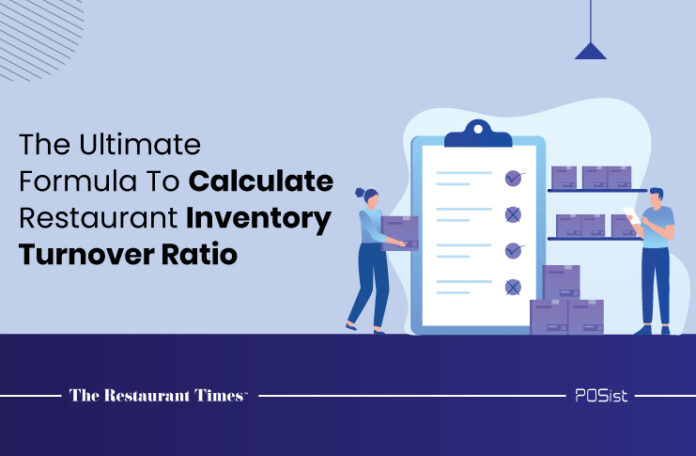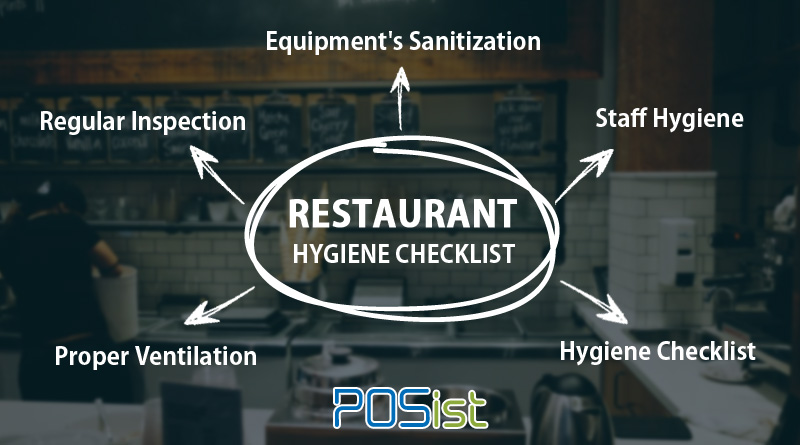When you open a new restaurant business or are already in one, you are supposed to keep track of everything happening in your restaurant, whether the number of waiters or the amount of inventory available. It’s critical to remain on top of your inventory and control your costs to ensure your restaurant is profitable and growing. The best part is, you don’t need an accounting degree to comprehend the arithmetic behind this crucial figure. All you need to know is how to calculate the inventory turnover ratio of your restaurant.
If you’re in charge of a restaurant’s day-to-day operations, keep reading to learn more about your inventory turnover ratio. Your Inventory Turnover Ratio (ITR) is used to determine how well your restaurant is performing concerning other concepts and the overall industry. To guarantee a profitable business, learn how to determine inventory turnover ratios and the best strategies to manage your inventory purchase strategy.
All About Restaurant Inventory Turnover Ratio
This article will help you understand what inventory turnover ratio is, how you can calculate it for better profits margins and how it can boost your restaurant business.
What Is Inventory Turnover Ratio?
The inventory turnover ratio is the number of times a store’s inventory has sold out in a specific period. A low inventory turnover ratio implies low sales or too much merchandise in stock, whereas a high inventory turnover ratio shows great sales or a faulty inventory purchase strategy. Unfortunately, about 43% of small business owners track inventory manually or don’t at all, which is not the way any restaurant owner should go about.
The inventory turnover ratio can help you determine the perfect spot between having too much inventory and going wrong and having too little inventory and running out of items in the middle of a meal. Quality, dependable, and accurate data drives inventory management, which is true for restaurants. In specific ways, the restaurant industry was late to onboard the digital revolution bandwagon, but it has certainly already begun to shift from monitoring inventory on-paper to tracking it digitally.
While the ideal turnover rate varies depending on the size of your company, there is a general rule that applies to all: a low ratio indicates a lack of sales or too much inventory in the stock room, whereas a high ratio indicates exceptional sales or an ineffective inventory purchase plan. Food has a relatively short lifespan, and so it’s critical to measure turnover. In addition, maintaining the quality and safety of your restaurant’s inventory is vital.
How To Calculate Inventory Turnover Ratio?
You can calculate your turnover rate depending on the cost of goods sold. This is referred to as the Cost of Sales or Revenue (CoGS) and is found on the income statement for your restaurant. When you start calculating the inventory, begin by deciding on a time range to investigate like annual, monthly, etc. After that, compute the average list using these three key numbers:
- cost of goods sold,
- beginning inventory, and
- ending inventory
Calculate Inventory Turnover Ratio
Inventory Turnover = COGS / Average Inventory
Calculate the Period’s Average Inventory
(Beginning Inventory + Ending Inventory)/2 = Average Inventory
Rather than the cost of goods sold, total restaurant sales can be used to compute this measure; however, COGS includes markup costs and maybe a more realistic number to utilize. The company’s markup is included in total annual sales, which might make it appear as though your restaurant is flipping inventory quicker than it is. Whatever ratio you use, it’s critical to indicate if you’re comparing COS or Total Sales when comparing your rate to others.
Technology For Inventory
When your restaurant’s ITR is high, you can quickly turn inventory and keep less money in current assets. It’s probable that you’re running out of key things or that you have a shortage of supply. With a POS, keep track of the inventory and remove the hassle of having spreadsheets and doing the calculations manually. A POS system with an inventory monitoring system can assist a firm in determining when to order merchandise to minimize stockouts and how to avoid having too much inventory on hand, which can cut into profits.
One of two expenses involved with keeping inventory of the product or goods sold by a small business is the cost of ordering inventory. Any restaurant can make a profit if their ordering costs are low. A POS system can help you keep your ordering expenses low by notifying you just when to order.
With a POS, sales and inventory, reports can be generated so that you are up to date with the statistics of your restaurant. In addition, if your restaurant has many locations, you do not have to be concerned about inventory theft because the POS system maintains track and keeps the data safe.
We realize that restaurant owners barely get enough time to rest daily, which is why it’s critical to make the most of the time you have. To ensure that food supplies spend less time in storage, automate operations and evaluate the workflow. You will have a more significant turnover percentage if the inventories are turned to income as quickly as possible. Restaurants with an excessive amount of inventory risk not being as productive as they can be, resulting in food waste or hoarding.
Maintaining a high inventory turnover ratio is critical in the restaurant sector to ensure that your purchases are not wasted. Calculating your inventory turnover rate is a simple approach to manage inventory issues and see how your business compares to others in your area.

















